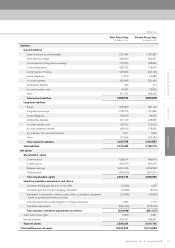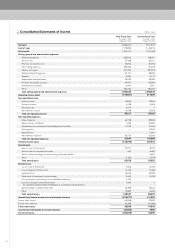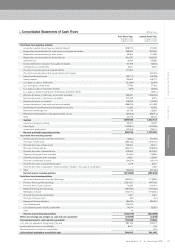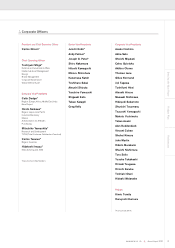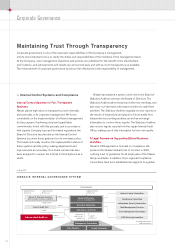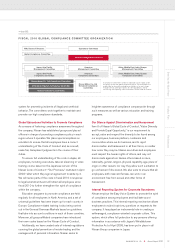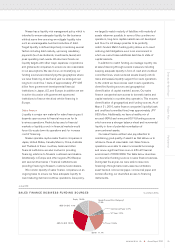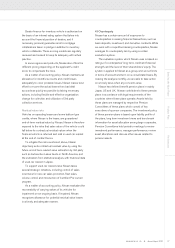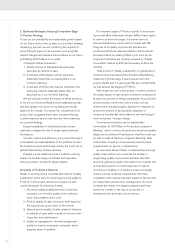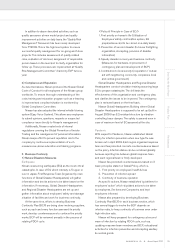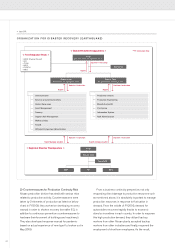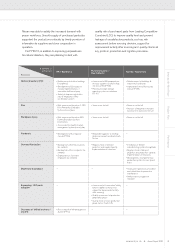Nissan 2010 Annual Report Download - page 39
Download and view the complete annual report
Please find page 39 of the 2010 Nissan annual report below. You can navigate through the pages in the report by either clicking on the pages listed below, or by using the keyword search tool below to find specific information within the annual report.
Entering the Next Phase Product Plan Performance
37Annual Report 2010NISSAN MOTOR CO., LTD.
Dealer finance for inventory vehicle is authorized on
the basis of an internal rating system that takes into
account the financial position of dealers, and if
necessary, personal guarantee and/or mortgage
collateral are taken in pledge in addition to inventory
vehicle collaterals. These scoring models are regularly
reviewed and revised to keep its adequacy with actual
practice.
In some regions and products, Nissan also offers the
different pricing depending on the applicant’s credit
score to compensate the risks.
As a matter of accounting policy, Nissan maintains an
allowance for doubtful accounts and credit losses
adequately to cover probable losses. Nissan makes best
effort to recover the actual losses from bad debt
accounts as quickly as possible by taking necessary
actions, including flexible and effective organization
change for collection and utilization of 3rd party
collection services.
Residual value risks
Vehicles on operating leases and some balloon type
credits, where Nissan is the lesser, are guaranteed
end-of-term residual value by Nissan. Nissan is therefore
exposed to the risks that sales value of the vehicle could
fall below its contractual residual values when the
financed vehicle is returned and sold in used car market
at the end of contract terms.
To mitigate the risks mentioned above, Nissan
objectively sets contractual residual value by using the
future end-of-term market value estimation by 3rd party
such as Automotive Lease Guide in North America, and
the estimation from statistical analysis with historical data
of used car market in Japan.
To support used car market value Nissan takes
several strategic initiatives, including control of sales
incentives for new car sales promotion, fleet sales
volume control and introduction of Certified Pre-owned
program.
As a matter of accounting policy, Nissan evaluates the
recoverability of carrying values of its vehicles for
impairment on an ongoing basis. If impaired, Nissan
recognizes allowance for potential residual value losses
in a timely and adequate manner.
4) Counterparty
Nissan has a certain amount of exposures to
counterparties in making financial transactions, such as
bank deposits, investment, and derivative contracts. While
we work with competitive banking counterparties, Nissan
manages its counterparty risk by using a certain
evaluation system.
The evaluation system which Nissan uses is based on
ratings of counterparties’ long-term credit and financial
strength, and the level of their shareholders’ equity. The
system is applied to Nissan as a group, and we set limits
in terms of amount and term on a consolidated basis. By
making the analysis monthly, we are able to take action
on a timely basis when any concerns arise.
Nissan has defined benefit pension plans in mainly
Japan, US and UK. Nissan contributes to these pension
plans in accordance with legal requirements of the
countries where these plans operate. Assets held by
these plans are managed by respective Pension
Committees of these plans which consist of key
executives of sponsor companies. The investment policy
of these pension plans is based upon liability profile of
the plans, long term investment views and benchmark
information for asset allocation among large corporates.
Pension Committees hold periodic meetings to review
investment performance, manager performance, review
asset allocations and discuss other issues related to
pension assets.


